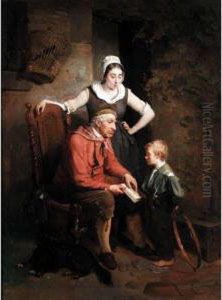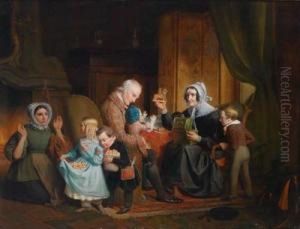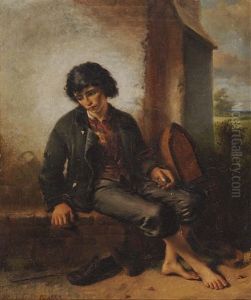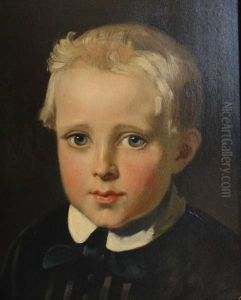Willem Benedictus Stoof Paintings
Willem Benedictus Stoof was a Dutch artist born in 1908. Not widely known outside of the Netherlands, Stoof's contributions to art, particularly in the realms of painting and drawing, reflect the cultural and societal shifts of the 20th century in Europe. His life and work spanned a period marked by two World Wars, the Great Depression, and significant technological and societal changes, all of which influenced his artistic direction and expression.
Stoof's early years were spent in an era where the echoes of Impressionism and the burgeoning movements of Expressionism and Cubism were reshaping the European art landscape. While specific details about his education and early influences are sparse, it is evident from his surviving works that he was keenly observant of the changing art styles and was adept at incorporating modernist elements into his work. His art evolved over the years, showcasing a versatility and adaptability to new art movements while maintaining a distinct personal style characterized by a deep understanding of color, form, and composition.
Throughout his career, Stoof remained relatively secluded from the mainstream art world, preferring the solitude of his studio to the bustling art scenes of Paris, Berlin, or even Amsterdam. This seclusion, however, did not imply a lack of productivity or creativity. On the contrary, Stoof was prolific, creating a vast body of work that included landscapes, still lifes, and portraits. His landscapes, in particular, reflect a deep appreciation for the natural beauty of the Dutch countryside, imbued with a sense of tranquility and timelessness.
Despite his considerable talent, Stoof's work did not gain significant recognition during his lifetime, a fate not uncommon among many artists of his era. It was only posthumously that art historians and collectors began to re-evaluate his contribution to Dutch art, recognizing the subtlety and depth of his work. Today, Stoof's paintings can be found in various Dutch museums and private collections, appreciated for their quiet beauty and the window they offer into the life and times of the 20th-century Netherlands.
Willem Benedictus Stoof passed away in 1985, leaving behind a legacy that, while modest in fame, is rich in artistic integrity and beauty. His life's work stands as a testament to the enduring value of dedication to one's craft, regardless of the recognition it may or may not receive. Stoof's artistic journey underscores the importance of personal expression and the power of art to capture and communicate the essence of human experience.





